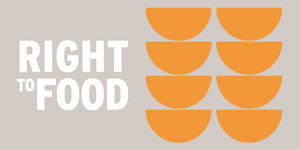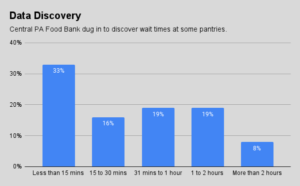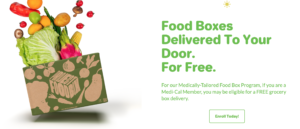In a zoom meeting last week, three human rights groups offered their perspective on the charitable food banking system and its impact on the world’s food-insecure population.
Citing a data point that is likely familiar to anyone working in hunger relief, the groups noted that food insecurity continues to persist in the United States more than 50 years after the first food bank opened its doors. Even so, the food banking model is being exported to other countries around the world.
The groups, which include the Global Solidarity Alliance for Food, Health and Social Justice, based in the U.S., the Global Network for the Right to Food and Nutrition, based in Europe, and FIAN International, also based in Europe, are not in favor of the charitable food model, nor its expansion. Their views are also outlined in this report, entitled Rights not Charity, A Human Rights Perspective on Corporate Food Aid, released last week.
They cite numerous reasons for their disfavor. For one, they say, charitable food relies on corporate food waste to feed the food-insecure, a system that benefits private food companies by giving them tax benefits for food donations, savings on food-waste disposals, and undeserved public-relations points for corporate social responsibility.
Further, the charitable food system absolves the government of responsibility to address food insecurity, they say. Rather than creating corporate incentives to support charitable food, the government should be building policies that address the root causes of food insecurity, which include poverty, income inequality and unfair labor conditions.
The groups have a dim view of TEFAP, arguing that the U.S. government program mostly serves to mitigate risks for large agricultural producers and food manufacturers, rather than prioritize the needs of low-income households. And while they see a role for emergency food assistance during times of crisis, the groups argue that emergency food in general has grown into “a highly problematic, permanent response to food access failure – a fixed state of emergency that benefits the profit motives of the private food sector.”

Charitable food upholds a “false link” between food waste and food security, the groups say, when in fact the focus should be on addressing the reasons people are food insecure in the first place, which include discrimination, a lack of access to food in their communities, and exploitation (in the form of low wages). “Revaluing food waste cannot be an adequate solution to these deep seated and structural problems,” the groups said.
Instead, a human rights approach is essential. Such an approach would require policies that support the right to food, along with other rights to health, housing, education and social protection. It would also require corporate food companies to pay living wages, have formal employment contracts and allow for unions. Perhaps most important is ensuring “food is consistently adequate, available, accessible and sustainable,” the groups said.
Is there any common ground between the goals of the human rights advocates and those of the nation’s food banks? It’s true that food banks do not often talk about a “right to food.” But the idea of making adequate food available and accessible to all is increasingly understood as a guiding principle of food banking. Especially since Covid, more food banks are making a concerted effort to meet the needs of underserved groups by making culturally appropriate food more widely available in convenient locations.
Joshua Lohnes, Research Assistant Professor at the University of West Virginia and a member of the National Right to Food Community of Practice, notes that those efforts still fall short of providing “sustainable” food, which is the fourth pillar of the right to food. “How are we actually creating a food system that is viable for our planet?” he asked. The top-down charitable food approach also tends to erode personal agency, which is not yet part of international law around the right to food, but is a topic among academics. “How much ability do people have to shape the food system they interact with?” he said.
A handful of food banks already are overt in their support of a right to food. Northwest Harvest of Seattle, for example, provides an overview of the right to food on its website, and is also a member of the National Right to Food Community of Practice. Daily Bread Food Bank of Toronto also emphasizes the right to food in its advocacy work.
Lohnes would like to see more food banks adopt the language of the right to food, though he understands the difficulties of arguing for that sort of food “utopia” in the face of pressing immediate needs like refrigeration. The right to food also introduces uncertainty, he acknowledged. “Where do my Walmart pickups fit in with this word? And all the systems of efficiency I’ve figured out?”
But there are good reasons for food banks to take a right-to-food approach. If food is a human right in a court of law, then the government would be obligated to help food banks become better at providing adequate, accessible, available and sustainable food, he said. “Ultimately, it means resources.” – C.C.
Like what you’re reading?
Support Food Bank News
This article was made possible by the readers who support Food Bank News, a national, editorially independent, nonprofit media organization. Food Bank News is not funded by any government agencies, nor is it part of a larger association or corporation. Your support helps ensure our continued solutions-oriented coverage of best practices in hunger relief. Thank you!
Connect with Us:










